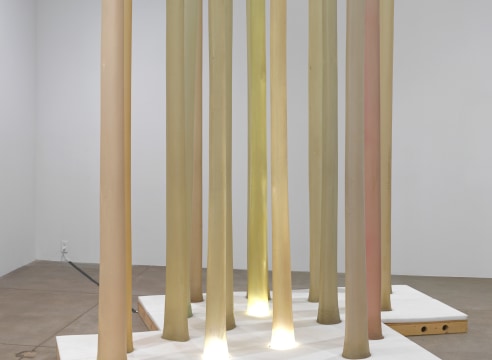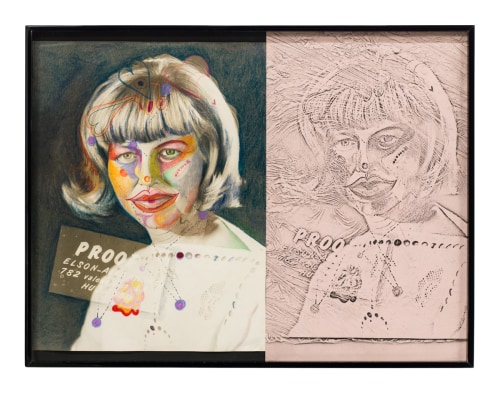

During the late 1960s, Barbara T. Smith (b. 1931, Pasadena) began to make actions, ritual meals, and other kinds of live art. Though working at the margins of traditional art contexts, her work was central to the development of what came to be called, by the 1970s, performance art. Since then, she has made over 160 performances: radical, interdisciplinary actions that demonstrate her sustained investigation of the intersection of, as she has defined it, “real life and performance.” Through her work, Smith has explored such subjects as the body, societal norms, desire, gendered roles, food, ritual, technology, personal transformation, collaboration, abuse and healing, death and aging.
This exhibition features many of Smith’s most significant works, presented chronologically beginning in 1965 with early paintings, drawings, and assemblages. Her Black Glass Paintings are more mirror than monochrome, reflecting the viewer and the room, and in doing so, forecast the significance of the body in her art making. At the time, Smith was an emerging artist testing her ideas about art and the self. She was one of the first artists to use a Xerox machine, which she deployed as a tool to make art about her life, often using her own body as object, subject, concept, and medium. She would continue to employ new technologies to make art throughout her career including fiberglass resin, soundwaves, television, artificial intelligence, video-phone, and digital imaging.
While Smith is celebrated for her performance art, she has always been a maker of things and an archivist of her output. Her unswervingly bold experimentation flows from her earliest paintings, Xerox prints, drawings, and sculptures to the wide range of objects and ephemera made for, and often resulting from, her performance art works. Together, they offer proof of a life lived as art.